Search Result
Results for "
stearic acid
" in MedChemExpress (MCE) Product Catalog:
11
Biochemical Assay Reagents
11
Isotope-Labeled Compounds
| Cat. No. |
Product Name |
Target |
Research Areas |
Chemical Structure |
-
- HY-B2219
-
-

-
- HY-B2219S3
-
-
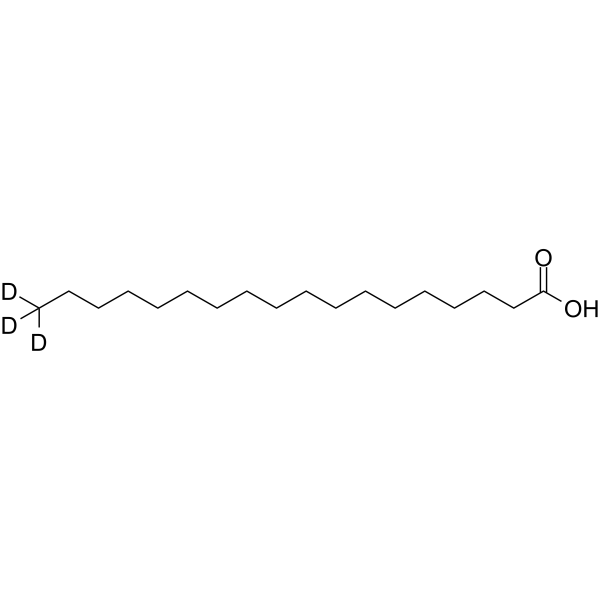
-
- HY-B2219S1
-
-
-
- HY-B2219R
-
|
|
Endogenous Metabolite
|
Metabolic Disease
Cancer
|
|
Stearic acid (Standard) is the analytical standard of Stearic acid. This product is intended for research and analytical applications. Stearic acid is a long chain dietary saturated fatty acid which exists in many animal and vegetable fats and oils.
|
-
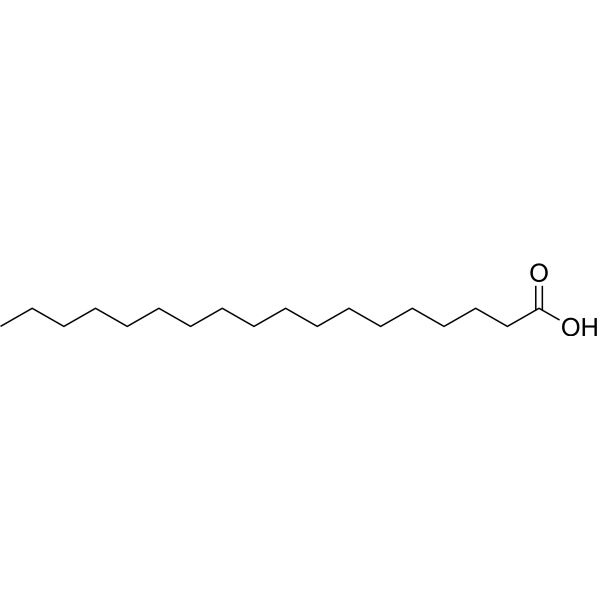
-
- HY-B2219S8
-
-
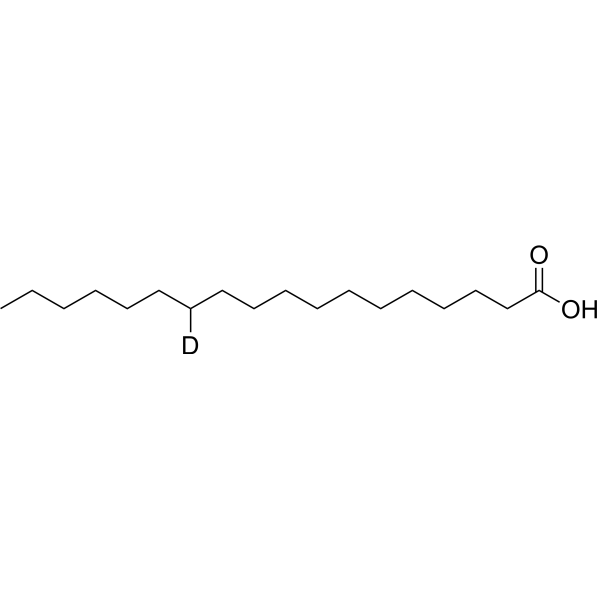
-
- HY-B2219S4
-
-
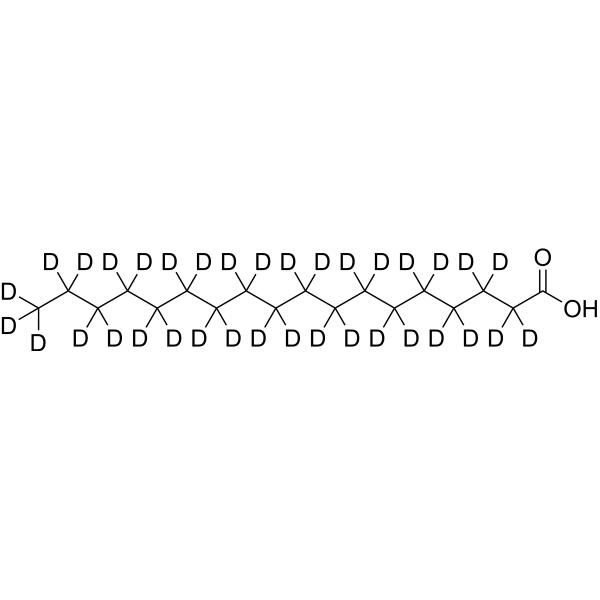
-
- HY-B2219S6
-
-
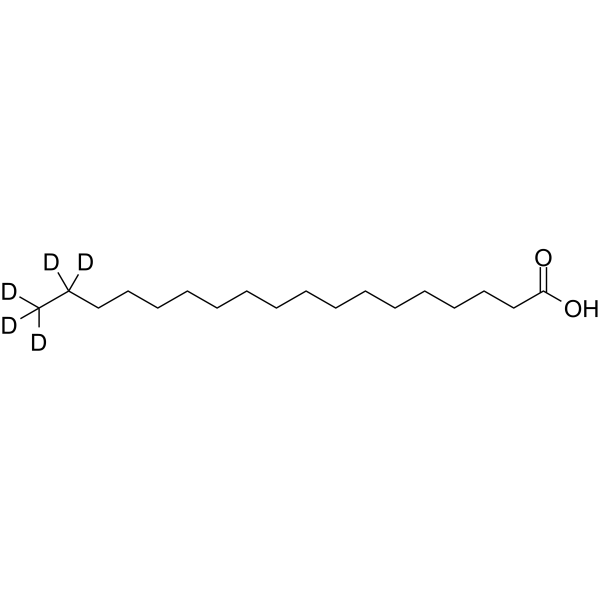
-
- HY-B2219S9
-
|
|
Endogenous Metabolite
|
|
|
Stearic acid-d7 is the deuterium labeled Stearic acid. Stearic acid is a long chain dietary saturated fatty acid which exists in many animal and vegetable fats and oils.
|
-
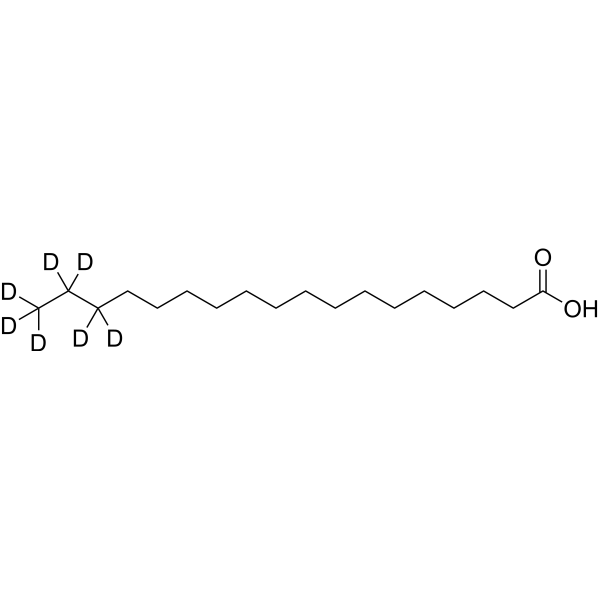
-
- HY-B2219S7
-
-
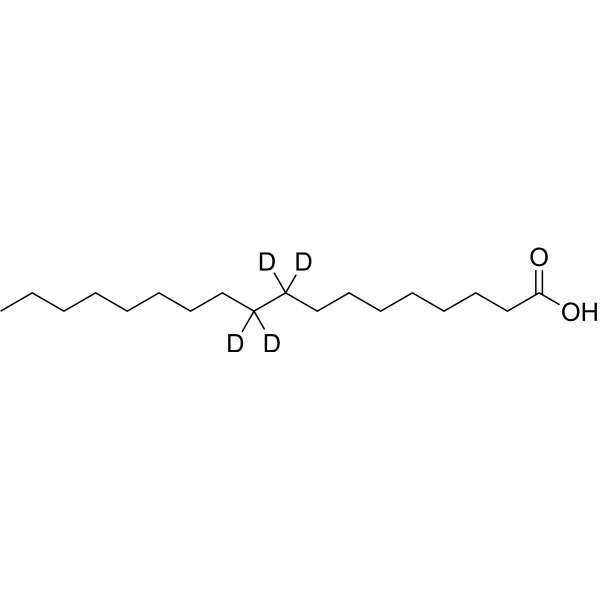
-
- HY-B2219S2
-
-
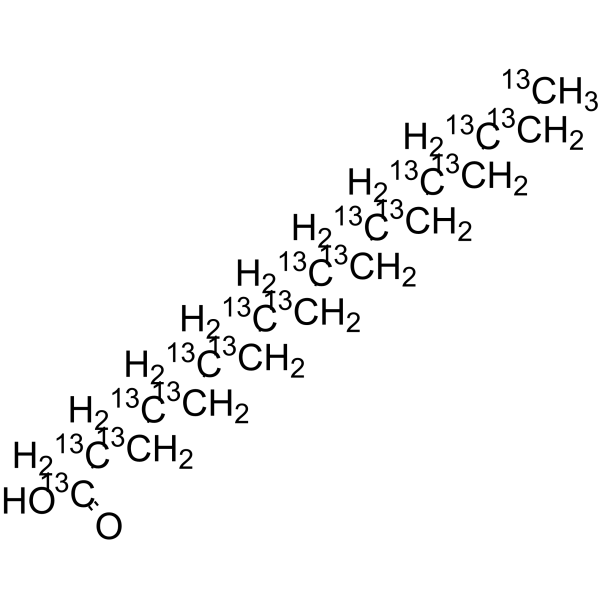
-
- HY-B2219S
-
-
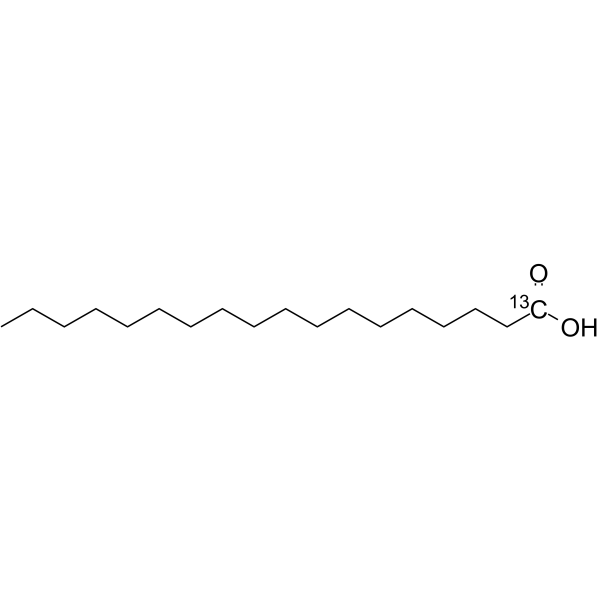
-
- HY-B2219S5
-
|
|
Endogenous Metabolite
|
Metabolic Disease
Cancer
|
|
Stearic acid-9,10-d2 is the deuterium labeled Stearic acid. Stearic acid is a long chain dietary saturated fatty acid which exists in many animal and vegetable fats and oils.
|
-
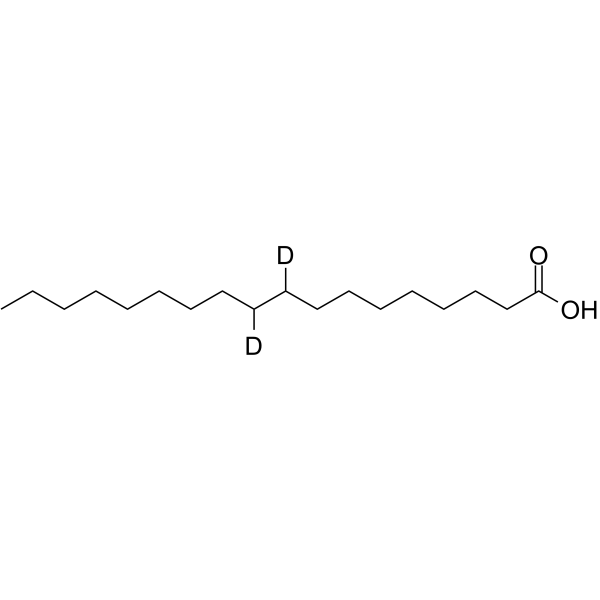
-
- HY-W440945
-
|
|
Liposome
|
Others
|
|
Stearic acid-PEG-amine, MW 2000 is an amphiphilic PEG polymer which forms micelles in an aqueous solution. The terminal amine can react with an NHS ester to form a stable amide linkage. The aliphatic chain of stearic acid can be used to encapsulate or congregate hydrophobic therapeutic agents while the PEG chain enhances overall solubility of the polymer. Reagent grade, for research use only.
|
-

-
- HY-W440954
-
|
|
Liposome
|
Others
|
|
Stearic acid-PEG-CH2CO2H, MW 2000 is a heterobifunctional polyPEG with 18-carbon aliphatic chain and carboxyl. The polymer has stearic acid as the hydrophobic tail and PEG as the hydrophilic chain, therefore it forms micelles in water. Carboxyl can react with amine in the presence of activator, such as HATU/EDC to generate a stable amide bond. Reagent grade, for research use only.
|
-

-
- HY-W440934
-
|
|
Liposome
|
|
|
Stearic acid-PEG-Rhodamine, MW 2000 is an amphiphilic PEG polymer which can form micelles in water. The rhodamine can be used for staining sample and easily traced by fluorescence microscopy. Rhodamine has maximum absorption at 570 nm and emission around 595 nm.
|
-

-
- HY-W440936
-
|
|
Liposome
|
|
|
Stearic acid-PEG-Rhodamine, MW 5000 is a fatty acid containing PEG polymer which can self assemble in an aqueous solution to form micelles. The polymer can be used to prepare nanoparticles for drug encapsulation. The red dye rhodamine can be easily traced by fluorescence microscopy. Rhodamine has maximum absorption at 570 nm and emission around 595 nm.
|
-

-
- HY-W440935
-
|
|
Liposome
|
|
|
Stearic acid-PEG-Rhodamine, MW 3400 is a fatty acid containing PEG polymer which can self assemble in an aqueous solution to form micelles. The polymer can be used to prepare nanoparticles for drug encapsulation. The red dye rhodamine can be easily traced by fluorescence microscopy. Rhodamine has maximum absorption at 570 nm and emission around 595 nm.
|
-
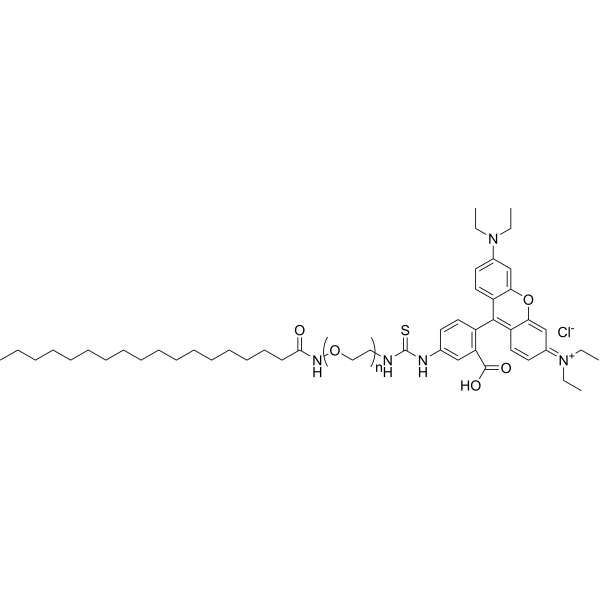
-
- HY-W440938
-
|
|
Liposome
|
|
|
Stearic acid-PEG-FITC, MW 2000 is an amphiphatic polyPEG which can self assemble to form micelles in water. The polymer can be used to encapsulate therapeutic agent. FITC is a green dye with peak absorption at 494 nm and maximum emission at 520 nm and can be used for staining biological samples or nanoparticles. FITC can be easily traced by fluorescence microscopy.
|
-

-
- HY-W440940
-
|
|
Liposome
|
|
|
Stearic acid-PEG-FITC, MW 5000 is a PEG lipid which forms micelles in water and can be used for drug delivery applications. The FITC fluorescent can be easily traced by miscroscopy. FITC is a green dye with peak absorption at 494 nm and maximum emission at 520 nm and can be used for staining biological samples or nanoparticles. FITC can be easily traced by fluorescence microscopy.
|
-

-
- HY-W440939
-
|
|
Liposome
|
|
|
Stearic acid-PEG-FITC, MW 3400 is a PEG lipid which forms micelles in water and can be used for drug delivery applications. The FITC fluorescent can be easily traced by miscroscopy. FITC is a green dye with peak absorption at 494 nm and maximum emission at 520 nm and can be used for staining biological samples or nanoparticles. FITC can be easily traced by fluorescence microscopy.
|
-
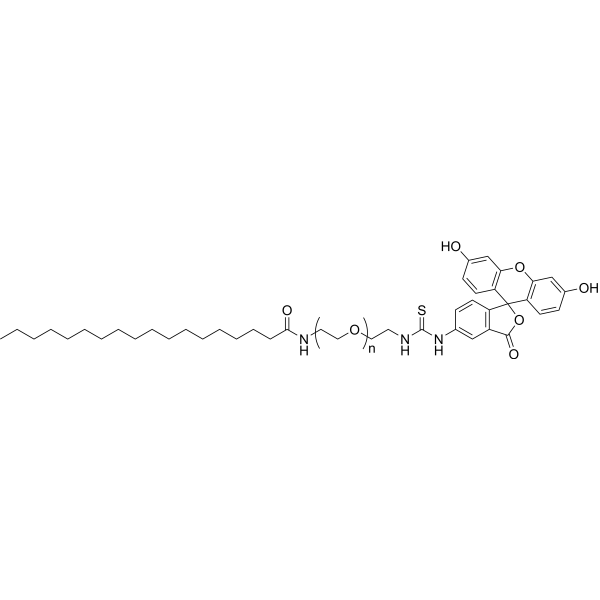
-
- HY-B1934
-
|
stearic acid methyl ester
|
Others
|
Others
|
|
Methyl stearate, isolated from Rheum palmatum L. is a compopent of of soybean and rapeseed biodiesels .
|
-
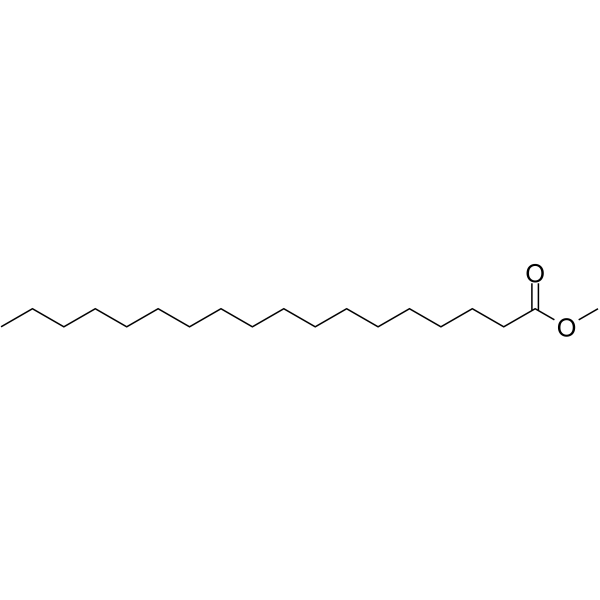
-
- HY-W013809
-
|
stearic acid ethyl ester
|
Biochemical Assay Reagents
|
Others
|
|
Ethyl stearate is a biochemical reagent that can be used as a biological material or organic compound for life science related research.
|
-
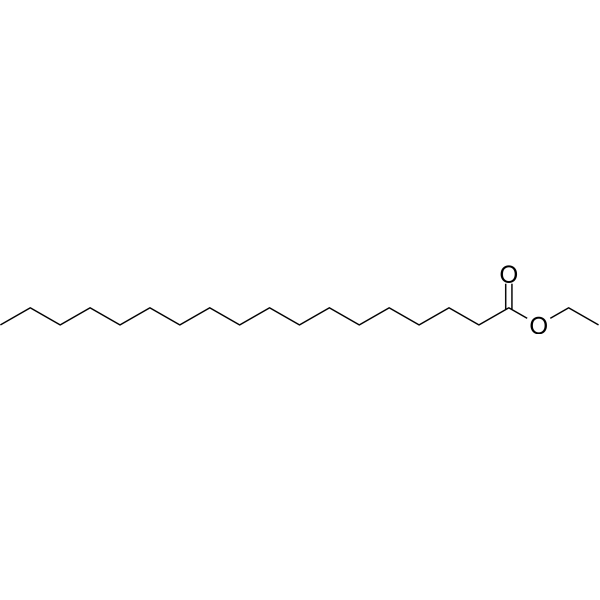
-
- HY-W127417
-
|
stearic acid behenyl ester
|
Biochemical Assay Reagents
|
Others
|
|
Behenyl stearate is a biochemical reagent that can be used as a biological material or organic compound for life science related research.
|
-

-
- HY-W127503
-
|
stearic acid Lauryl Ester
|
Biochemical Assay Reagents
|
Others
|
|
Dodecyl Stearate is a biochemical reagent that can be used as a biological material or organic compound for life science related research.
|
-

-
- HY-Y1054
-
|
stearic acid Magnesium(II) Salt
|
Biochemical Assay Reagents
|
Others
|
|
Magnesium stearate is a commonly used pharmaceutical lubricant. But Magnesium stearate leads to an adverse effect on bonding between particles. Magnesium stearate can be used as an excipient, such as lubricant. Pharmaceutical excipients, or pharmaceutical auxiliaries, refer to other chemical substances used in the pharmaceutical process other than pharmaceutical ingredients. Pharmaceutical excipients generally refer to inactive ingredients in pharmaceutical preparations, which can improve the stability, solubility and processability of pharmaceutical preparations. Pharmaceutical excipients also affect the absorption, distribution, metabolism, and elimination (ADME) processes of co-administered drugs .
|
-
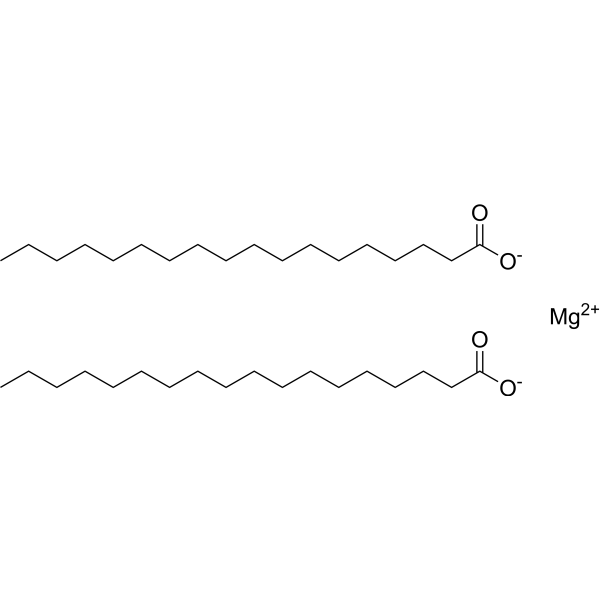
-
- HY-B1934R
-
|
stearic acid methyl ester (Standard)
|
Others
|
Others
|
|
Methyl stearate (Standard) is the analytical standard of Methyl stearate. This product is intended for research and analytical applications. Methyl stearate, isolated from Rheum palmatum L. is a compopent of of soybean and rapeseed biodiesels .
|
-
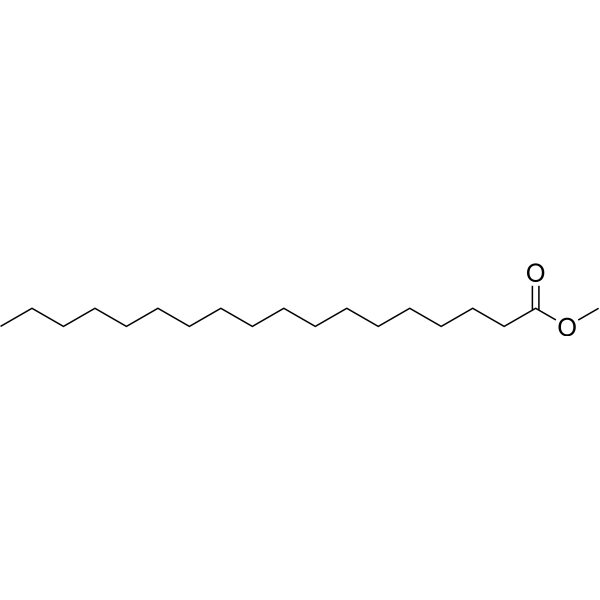
-
- HY-W440927
-
|
|
Liposome
|
Others
|
|
DSPE-PEG-DBCO, MW 3400 is a copper-free click chemistry reagent. The PEG polymer lipid allows formation of lipid bilayer in aqueous solution. The reagent can be used to prepare liposomes or nanoparticles for encapsulating and delivering therapeutic agents in targeted drug delivery system. Reagent grade, for research use only.
|
-

-
- HY-W440950
-
|
|
Liposome
|
Others
|
|
Azide-PEG-Silane, MW 3400 can be used for surface modification through interaction between hydroxyl and ethoxyl silane. The azide group enables click reaction with alkyne to form a triazole bond. Reagent grade, for research use only.
|
-

-
- HY-W051298
-
|
stearic diglyceride
|
Biochemical Assay Reagents
|
Metabolic Disease
|
|
Distearin is a diacylglycerol containing stearic acid at two positions. Stearic acid is a long chain dietary saturated fatty acid which exists in many animal and vegetable fats and oils .
|
-

-
- HY-127035
-
-
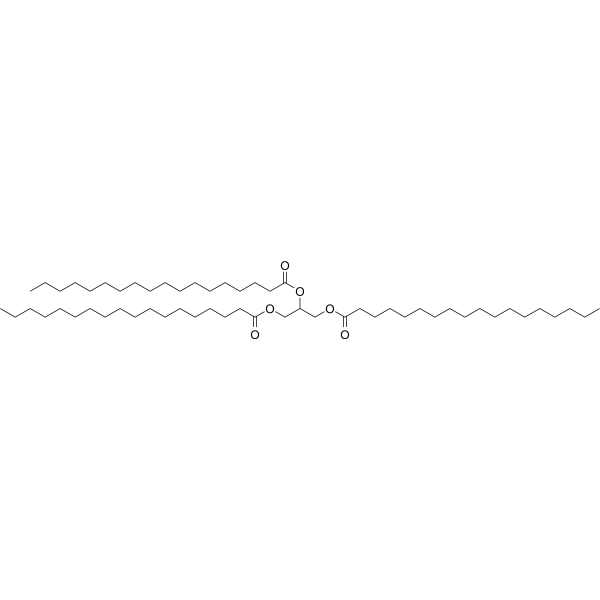
-
- HY-157730
-
-
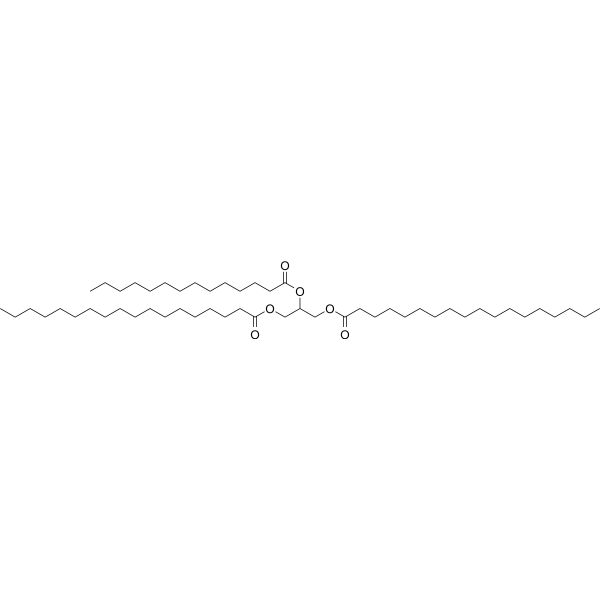
-
- HY-151692
-
|
|
ADC Linker
|
Others
|
|
18-Azido-stearic acid is a click chemistry reagent containing an azide group. 18-Azido-stearic acid can be used as a hydrophobic bioconjugation linker (using N-Myristoyltransferase) that can be further modified at the azido-position using Click-chemistry .
|
-

-
- HY-W127547
-
|
|
Biochemical Assay Reagents
|
Others
|
|
Stearic anhydride is a biochemical reagent that can be used as a biological material or organic compound for life science related research.
|
-

-
- HY-133621
-
|
|
Others
|
Cancer
|
|
9,10-Dichlorostearic acid is a chlorinated stearic acid with antimutagenic properties. 9,10-Dichlorostearic acid can cause membrane damage by inducing leakage of adenosine triphosphate (ATP) from mammalian tumour cells in vitro .
|
-
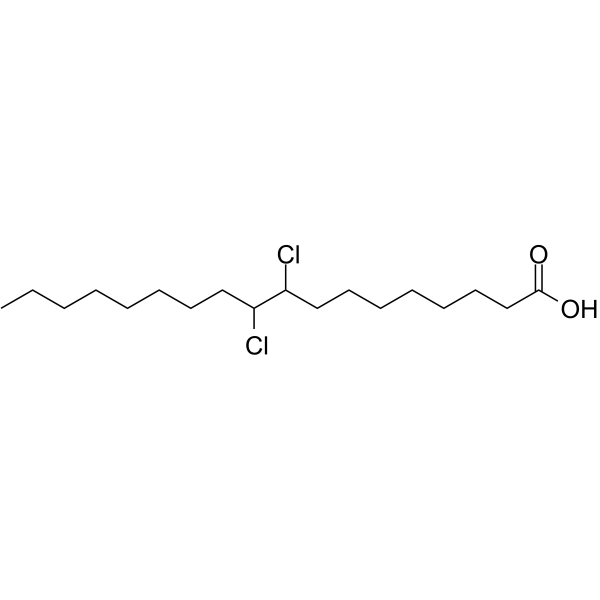
-
- HY-131309
-
|
12-DSA
|
Endogenous Metabolite
|
Metabolic Disease
|
|
12-Doxyl stearic acid is a form of stearic acid that contains a 4,4-dimethyl-3-oxazolinyloxy (DOXYL) group, creating a hydrophobic spin label. It is commonly used to study molecular aspects of membranes and hydrophobic proteins.
|
-

-
- HY-W704966
-
|
18:0 Lyso-PC; LPC(18:0); PC(0:0/18:0)
|
Endogenous Metabolite
|
Metabolic Disease
|
|
2-Stearoyl-sn-glycero-3-PC is a lysophospholipid that contains stearic acid (HY-B2219) at the sn-2 position. It has been found in rabbit myocardium.
|
-

-
- HY-W019833
-
|
PC(14:0/18:0); 1-Myristoyl-2-stearoyl-sn-glycero-3-phosphocholine
|
Endogenous Metabolite
|
Metabolic Disease
|
|
MSPC is an asymmetrical phosphatidylcholine containing a myristic acid (14:0) at the sn-1 position and a stearic acid (18:0) at the sn-2 position. It can self assemble in water to form lipid bilayers. Reagent grade, for research purpose.
|
-
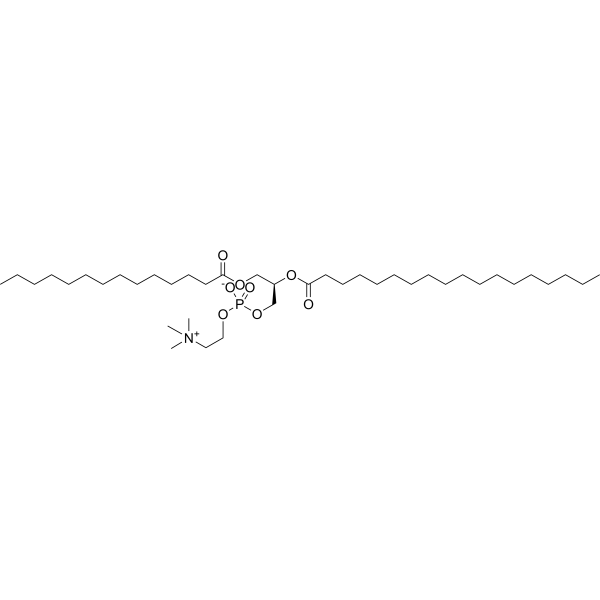
-
- HY-W440982
-
|
PC(18:0/18:1); 2-?Oleoyl-?1-?stearoyl-?sn-?glycero-?3-?phosphocholine
|
Liposome
|
Others
|
|
SOPC is an asymmetrical phospholipid with saturated fatty acid (stearic acid/18:0) at sn-1 position and unsaturated fatty acid (oleic acid/18:1) at sn-2 position. SOPC can be used for various biochemical studies .
|
-
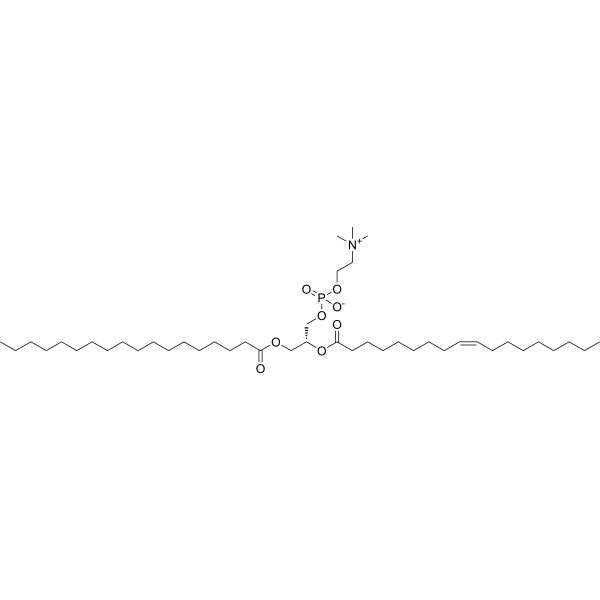
-
- HY-W710380
-
|
1,2-Stearin-3-Olein; TG(18:0/18:0/18:1)
|
Endogenous Metabolite
|
Metabolic Disease
|
|
1,2-Distearoyl-3-oleoyl-rac-glycerol is a triacylglycerol that contains stearic acid (HY-B2219) at the sn-1 and sn-2 positions and oleic acid (HY-N1446) at the sn-3 position. It has been found in cocoa butter and vegetable oils.
|
-

-
- HY-W704603
-
|
1,2-Olein-3-Stearin; TG(18:1/18:1/18:0)
|
Endogenous Metabolite
|
Metabolic Disease
|
|
1,2-Dioleoyl-3-stearoyl-rac-glycerol is a triacylglycerol that contains oleic acid (HY-N1446) at the sn-1 and sn-2 positions and stearic acid (HY-B2219) at the sn-3 position. It has been found in sunflower, corn, and soybean oils, as well as ostrich oil.
|
-

-
- HY-W706672
-
|
Glycerol Tritricosanoate; TG(23:0/23:0/23:0); Tritricosanoin
|
Endogenous Metabolite
|
Metabolic Disease
|
|
1,2,3-Tritricosanoyl glycerol is a triacylglycerol that contains tricosanoic acid (HY-W009081) at the sn-1, sn-2, and sn-3 positions. It has been used as an internal standard for the quantification of fatty acids in the triglyceride component of human aortic endothelial cells (HAECs) grown in media supplemented with stearic and/or oleic acid.
|
-

-
- HY-W704597
-
|
1-Palmitin-2-Olein-3-Stearin; TG(16:0/18:1/18:0)
|
Endogenous Metabolite
|
Metabolic Disease
|
|
1-Palmitoyl-2-oleoyl-3-stearoyl-rac-glycerol is a triacylglycerol that contains palmitic acid (HY-N0830) at the sn-1 position, oleic acid (HY-N1446) at the sn-2 position, and stearic acid (HY-B2219) at the sn-3 position. It is one of the primary triacylglycerols found in cocoa butter.
|
-

-
- HY-W710399
-
|
DG(16:0/0:0/18:0); 1-Palmitin-3-Stearin
|
Endogenous Metabolite
|
Metabolic Disease
|
|
1-Palmitoyl-3-stearoyl-rac-glycerol is a diacylglycerol that contains palmitic acid (HY-N0830) at the sn-1 position and stearic acid (HY-B2219) at the sn-3 position. It has been found in palm-based diacylglycerols produced from palm stearin, palm mid fraction, palm oil, and palm olein, as well as in wheat bran and brewer’s spent grain extracts.
|
-

-
- HY-145545
-
|
PE(18:0/22:4); 1-Stearoyl-2-Docosatraenoyl-sn-glycero-3-PE
|
Endogenous Metabolite
|
Metabolic Disease
|
|
1-Stearoyl-2-adrenoyl-sn-glycero-3-PE is a phospholipid that contains stearic acid (HY-B2219) and adrenic acid (HY-W013215) at the sn-1 and sn-2 positions, respectively. 1-Stearoyl-2-adrenoyl-sn-glycero-3-PE levels are inversely correlated with subject age in mitochondria isolated from human post-mortem hippocampus.
|
-

-
- HY-W099563
-
|
|
Biochemical Assay Reagents
|
Others
|
|
4-Nitrophenyl stearate, which is an ester formed by the condensation of stearic acid and 4-nitrophenol, is commonly used as a substrate for enzymatic assays, where the hydrolysis of ester bonds by esterase and lipase can be measured by absorbance or ratio In addition, 4-Nitrophenyl stearate has been used as a model compound to study the enzymatic activity and selectivity of lipases and esterases from various sources. The long hydrophobic tail of the molecule makes it suitable for use in lipophilic Good solubility in the environment makes it a useful probe for studying lipid metabolism.
|
-
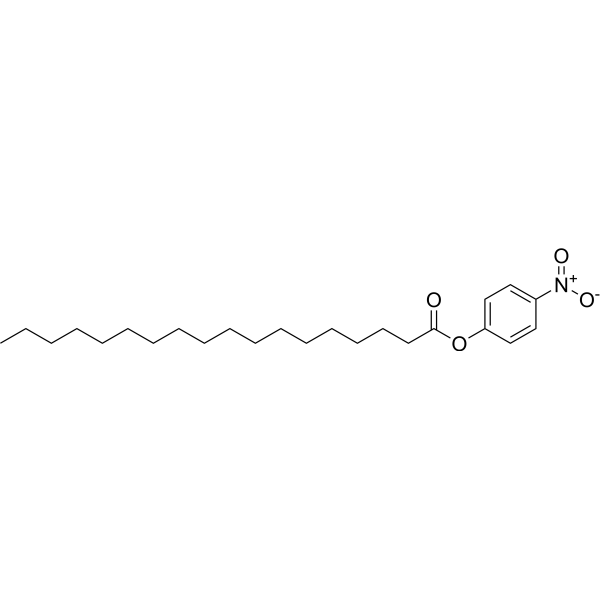
-
- HY-W115818
-
|
|
Biochemical Assay Reagents
|
Others
|
|
Polyoxyethylene Sorbitan Monostearate is an ester of the saturated fatty acid stearic acid (C18:0). Polyoxyethylene Sorbitan Monostearate can be used as an excipient, such as surfactant, emulsifier, solubilizer, wetting agent. Pharmaceutical excipients, or pharmaceutical auxiliaries, refer to other chemical substances used in the pharmaceutical process other than pharmaceutical ingredients. Pharmaceutical excipients generally refer to inactive ingredients in pharmaceutical preparations, which can improve the stability, solubility and processability of pharmaceutical preparations. Pharmaceutical excipients also affect the absorption, distribution, metabolism, and elimination (ADME) processes of co-administered drugs .
|
-
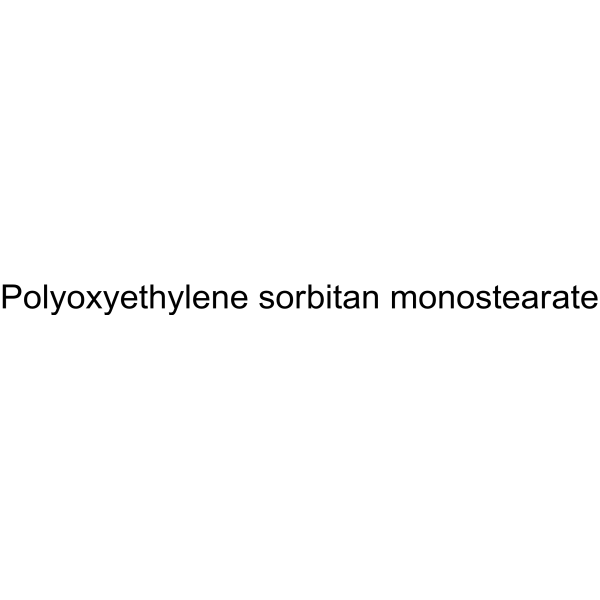
-
- HY-W011188S
-
|
|
Isotope-Labeled Compounds
|
Others
|
|
Glycidyl stearate-d5 is a deuterium labeled Glycidyl stearate (HY-W011188). Oxiran-2-ylmethyl stearate is a compound belonging to the class of esters. It contains reactive oxirane or epoxy groups that give the molecule its unique properties. Oxiran-2-ylmethyl stearate is derived from stearic acid and epichlorohydrin, which are naturally occurring substances. Glycidyl stearate is commonly used in various industrial applications such as the production of coatings, adhesives and surfactants. It can also be used as a crosslinking agent in the manufacture of polymers and resins.
|
-
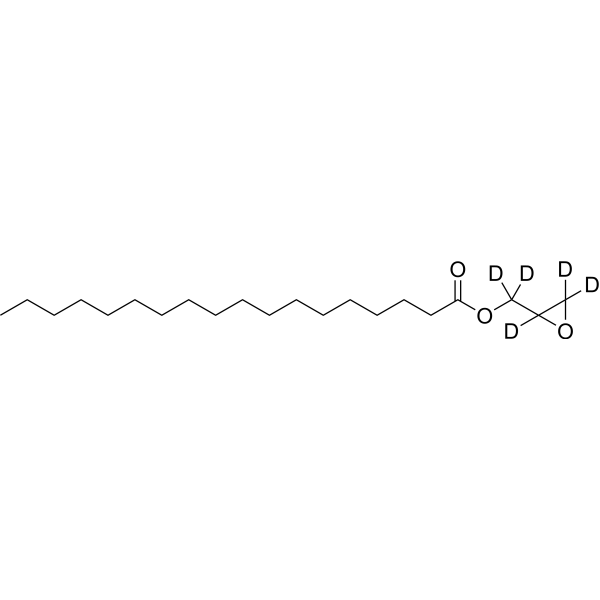
-
- HY-145473
-
|
15(S)-HETE-SAPE; 15(S)-Hydroxyeicosatetraenoic acid-SAPE; 1-Stearoyl-2-15(S)-HETE-sn-glycero-3-Phosphatidylethanolamine
|
Others
|
Metabolic Disease
|
|
1-Stearoyl-2-15(S)-HETE-sn-glycero-3-PE is a phospholipid that contains stearic acid (HY-B2219) at the sn-1 position and 15(S)-HETE at the sn-2 position. It is formed in human peripheral monocytes activated by the calcium ionophore A23187 (HY-N6687) by direct oxidation of 1-stearoyl-2-arachidonoyl-sn-glycero-3-PE (SAPE) by 15-LO. Phosphoethanolamine (PE) HETEs (PE-HETEs), including 1-stearoyl-2-15(S)-HETE-sn-glycero-3-PE, are the main source of esterified HETE in ionophore-activated monocytes.
|
-

-
- HY-115701
-
|
1-Stearoyl-2-15(S)-HpETE-sn-glycero-3-phosphoethanolamine; 15(S)-HpETE-SAPE; 15(S)-hydroperoxyeicostetraenoic acid-SAPE
|
Others
|
Inflammation/Immunology
|
|
1-Stearoyl-2-15(S)-HpETE-sn-glycero-3-Pe is a phospholipid that contains stearic acid (HY-B2219) at the sn-1 position and 15(S)-HpETE at the sn-2 position. It is produced via oxidation of 1-stearoyl-2-arachidonoyl-sn-glycero-3-Pe (SAPE) by 15-lipoxygenase (15-LO). 1-Stearoyl-2-15(S)-HpETE-sn-glycero-3-Pe (0.6 and 0.9 μM) increases ferroptotic cell death in wild-type and Acsl4 knockout Pfa1 mouse embryonic fibroblasts (MEFs) treated with the GPX4 inhibitor RSL3.
|
-

| Cat. No. |
Product Name |
Type |
-
- HY-W440934
-
|
|
Drug Delivery
|
|
Stearic acid-PEG-Rhodamine, MW 2000 is an amphiphilic PEG polymer which can form micelles in water. The rhodamine can be used for staining sample and easily traced by fluorescence microscopy. Rhodamine has maximum absorption at 570 nm and emission around 595 nm.
|
-
- HY-W440936
-
|
|
Drug Delivery
|
|
Stearic acid-PEG-Rhodamine, MW 5000 is a fatty acid containing PEG polymer which can self assemble in an aqueous solution to form micelles. The polymer can be used to prepare nanoparticles for drug encapsulation. The red dye rhodamine can be easily traced by fluorescence microscopy. Rhodamine has maximum absorption at 570 nm and emission around 595 nm.
|
-
- HY-W440935
-
|
|
Drug Delivery
|
|
Stearic acid-PEG-Rhodamine, MW 3400 is a fatty acid containing PEG polymer which can self assemble in an aqueous solution to form micelles. The polymer can be used to prepare nanoparticles for drug encapsulation. The red dye rhodamine can be easily traced by fluorescence microscopy. Rhodamine has maximum absorption at 570 nm and emission around 595 nm.
|
-
- HY-W440938
-
|
|
Drug Delivery
|
|
Stearic acid-PEG-FITC, MW 2000 is an amphiphatic polyPEG which can self assemble to form micelles in water. The polymer can be used to encapsulate therapeutic agent. FITC is a green dye with peak absorption at 494 nm and maximum emission at 520 nm and can be used for staining biological samples or nanoparticles. FITC can be easily traced by fluorescence microscopy.
|
-
- HY-W440940
-
|
|
Drug Delivery
|
|
Stearic acid-PEG-FITC, MW 5000 is a PEG lipid which forms micelles in water and can be used for drug delivery applications. The FITC fluorescent can be easily traced by miscroscopy. FITC is a green dye with peak absorption at 494 nm and maximum emission at 520 nm and can be used for staining biological samples or nanoparticles. FITC can be easily traced by fluorescence microscopy.
|
-
- HY-W440939
-
|
|
Drug Delivery
|
|
Stearic acid-PEG-FITC, MW 3400 is a PEG lipid which forms micelles in water and can be used for drug delivery applications. The FITC fluorescent can be easily traced by miscroscopy. FITC is a green dye with peak absorption at 494 nm and maximum emission at 520 nm and can be used for staining biological samples or nanoparticles. FITC can be easily traced by fluorescence microscopy.
|
-
- HY-W013809
-
|
stearic acid ethyl ester
|
Biochemical Assay Reagents
|
|
Ethyl stearate is a biochemical reagent that can be used as a biological material or organic compound for life science related research.
|
-
- HY-W127417
-
|
stearic acid behenyl ester
|
Biochemical Assay Reagents
|
|
Behenyl stearate is a biochemical reagent that can be used as a biological material or organic compound for life science related research.
|
-
- HY-W127503
-
|
stearic acid Lauryl Ester
|
Biochemical Assay Reagents
|
|
Dodecyl Stearate is a biochemical reagent that can be used as a biological material or organic compound for life science related research.
|
-
- HY-W127547
-
|
|
Biochemical Assay Reagents
|
|
Stearic anhydride is a biochemical reagent that can be used as a biological material or organic compound for life science related research.
|
-
- HY-W099563
-
|
|
Biochemical Assay Reagents
|
|
4-Nitrophenyl stearate, which is an ester formed by the condensation of stearic acid and 4-nitrophenol, is commonly used as a substrate for enzymatic assays, where the hydrolysis of ester bonds by esterase and lipase can be measured by absorbance or ratio In addition, 4-Nitrophenyl stearate has been used as a model compound to study the enzymatic activity and selectivity of lipases and esterases from various sources. The long hydrophobic tail of the molecule makes it suitable for use in lipophilic Good solubility in the environment makes it a useful probe for studying lipid metabolism.
|
| Cat. No. |
Product Name |
Category |
Target |
Chemical Structure |
| Cat. No. |
Product Name |
Chemical Structure |
-
- HY-B2219S3
-
|
|
|
Stearic acid-d3 is the deuterium labeled Stearic acid. Stearic acid is a long chain dietary saturated fatty acid which exists in many animal and vegetable fats and oils.
|
-

-
- HY-B2219S1
-
|
|
|
Stearic acid-d2 is the deuterium labeled Stearic acid. Stearic acid is a long chain dietary saturated fatty acid which exists in many animal and vegetable fats and oils.
|
-

-
- HY-B2219S4
-
|
|
|
Stearic Acid-d35 is the deuterium labeled Stearic acid. Stearic acid is a long chain dietary saturated fatty acid which exists in many animal and vegetable fats and oils.
|
-

-
- HY-B2219S8
-
|
|
|
Stearic acid-d is the deuterium labeled Stearic acid. Stearic acid is a long chain dietary saturated fatty acid which exists in many animal and vegetable fats and oils.
|
-

-
- HY-B2219S6
-
|
|
|
Stearic acid-d55 is the deuterium labeled Stearic acid. Stearic acid is a long chain dietary saturated fatty acid which exists in many animal and vegetable fats and oils.
|
-

-
- HY-B2219S9
-
|
|
|
Stearic acid-d7 is the deuterium labeled Stearic acid. Stearic acid is a long chain dietary saturated fatty acid which exists in many animal and vegetable fats and oils.
|
-

-
- HY-B2219S7
-
|
|
|
Stearic acid-d4 is the deuterium labeled Stearic acid. Stearic acid is a long chain dietary saturated fatty acid which exists in many animal and vegetable fats and oils[1].
|
-

-
- HY-B2219S2
-
|
|
|
Stearic acid- 13C18is the 13C-labeled Stearic acid. Stearic acid is a long chain dietary saturated fatty acid which exists in many animal and vegetable fats and oils.
|
-

-
- HY-B2219S
-
|
|
|
Stearic acid-1- 13C is the 13C labeled Stearic acid. Stearic acid is a long chain dietary saturated fatty acid which exists in many animal and vegetable fats and oils.
|
-

-
- HY-B2219S5
-
|
|
|
Stearic acid-9,10-d2 is the deuterium labeled Stearic acid. Stearic acid is a long chain dietary saturated fatty acid which exists in many animal and vegetable fats and oils.
|
-

-
- HY-W011188S
-
|
|
|
Glycidyl stearate-d5 is a deuterium labeled Glycidyl stearate (HY-W011188). Oxiran-2-ylmethyl stearate is a compound belonging to the class of esters. It contains reactive oxirane or epoxy groups that give the molecule its unique properties. Oxiran-2-ylmethyl stearate is derived from stearic acid and epichlorohydrin, which are naturally occurring substances. Glycidyl stearate is commonly used in various industrial applications such as the production of coatings, adhesives and surfactants. It can also be used as a crosslinking agent in the manufacture of polymers and resins.
|
-

| Cat. No. |
Product Name |
|
Classification |
-
- HY-151692
-
|
|
|
Azide
|
|
18-Azido-stearic acid is a click chemistry reagent containing an azide group. 18-Azido-stearic acid can be used as a hydrophobic bioconjugation linker (using N-Myristoyltransferase) that can be further modified at the azido-position using Click-chemistry .
|
Your information is safe with us. * Required Fields.
Inquiry Information
- Product Name:
- Cat. No.:
- Quantity:
- MCE Japan Authorized Agent:


























































